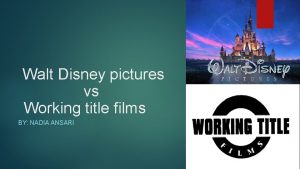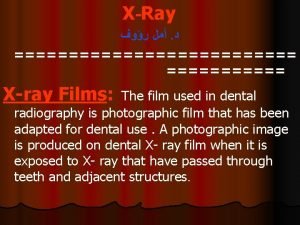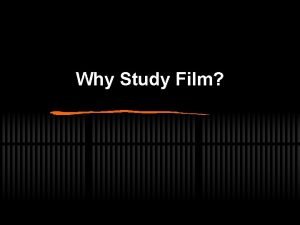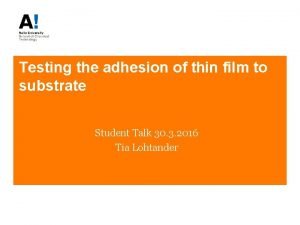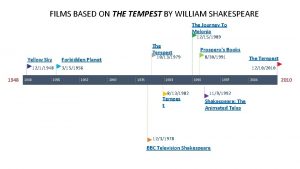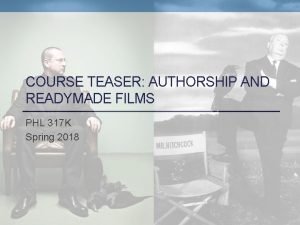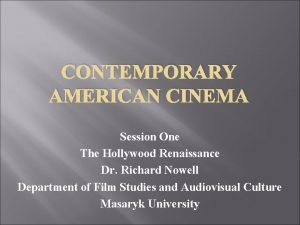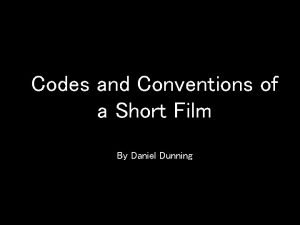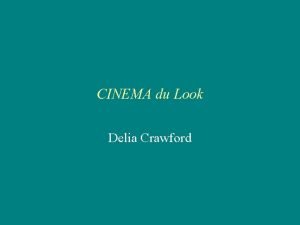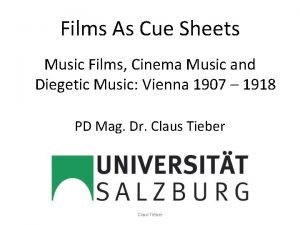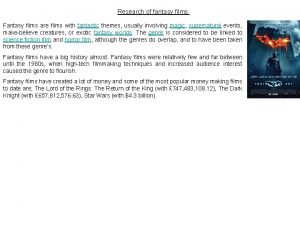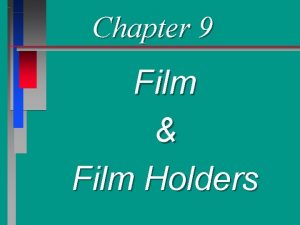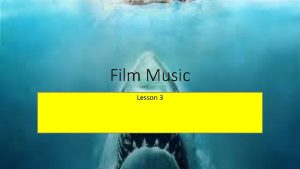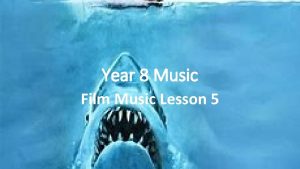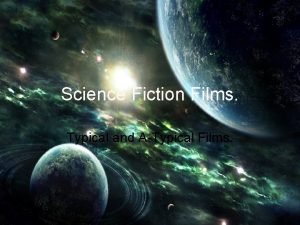CHAPTER 36 FILM MUSIC Early Film Music Films










- Slides: 10

CHAPTER 36 FILM MUSIC

Early Film Music Films shown starting in 1890 s Projectors were noisy for silent films Live music added to cover noise Piano used with film in Paris, 1895 In 1908, Paris company, Le Film d’Art, commissioned Camille Saint-Saëns to compose music for L’assassinat du Duc de Guise; live musicians played during film screeings Work by Saint-Saëns was a success, but increased expense for theaters

Early Film Music 1909 Edison film company produced list of classical works that would fit specific moods 1912 Max Winkler created cue sheets 1926 Warner Brothers produced vitaphone system Vitaphone films included Don Juan and The Jazz Sing

Film Composers Max Steiner became one of the first movie composers • 1933, King Kong • 1939, Gone With the Wind • 1942, Casablanca Bernard Herrmann Aaron Copland • 1941, Citizen Kane • 1958, Vertigo • 1960, Psycho • Several other Hitchcock films • 1948, The Heiress

Later Film-Scoring Practices • 2001: A Space Odyssey uses music by Richard Strauss; Johann Strauss; Ligeti; Khatchaturian Use of previously • Music is essential to film; only 40 minutes of dialogue recorded music Composing new music and existing music • John Williams wrote score; music included in 88 of 121 minutes of movice • Williams used a main theme that functioned like an opera overture • Williams used leitmotif technique for each character, like Wagner

Featured Listening : “Main Theme” from Star Wars by John Williams Composed for film in 1977 Movie music Moderate tempo, slows near the end Listening Excerpt from CD 2, tracks 38, p. 339 -340 Orchestra Quadruple meter with some triple meter Listen to the opening fanfare, heroic theme, battle music, and Princess Leia’s leitmotif

Listening Guide: The Main Theme from Star Wars (contd. ) Fanfare Heroic theme played by brass and percussion, then entire orchestra Light and soft transition Strings build intensity Battle music (triple meter), then syncopated punctuations obscure meter Heroic theme returns in quadruple meter Princess Leia’s leitmotif is played by cellos and basses Heroic theme in high brass Fanfare-like statements in brass Tempo slows and intensity drops Closes with music from Elgar’s The Coronation March

Trend in Movie Music: Synthesizer 1964, synthesizer developed by Robert Moog Popular with rock bands Synthesizer improved through 1970 s Synthesizers produced sounds like an orchestra and generated sound effects A composer could produce soundtrack without live musicians

Synthesizer Academy Award Scores Midnight Express (1978) by Giorgio Moroder Chariots of Fire (1981) by Vangelis

Composers Writing for Live Orchestras John Corigliano Philip Glass James Horner 1980, Altered States 1983, Koyaanisqatsi 1989, Field of Dreams 1999, The Red Violin 2002, The Hours 1995, Braveheart; Apollo 13 1997, Titanic
